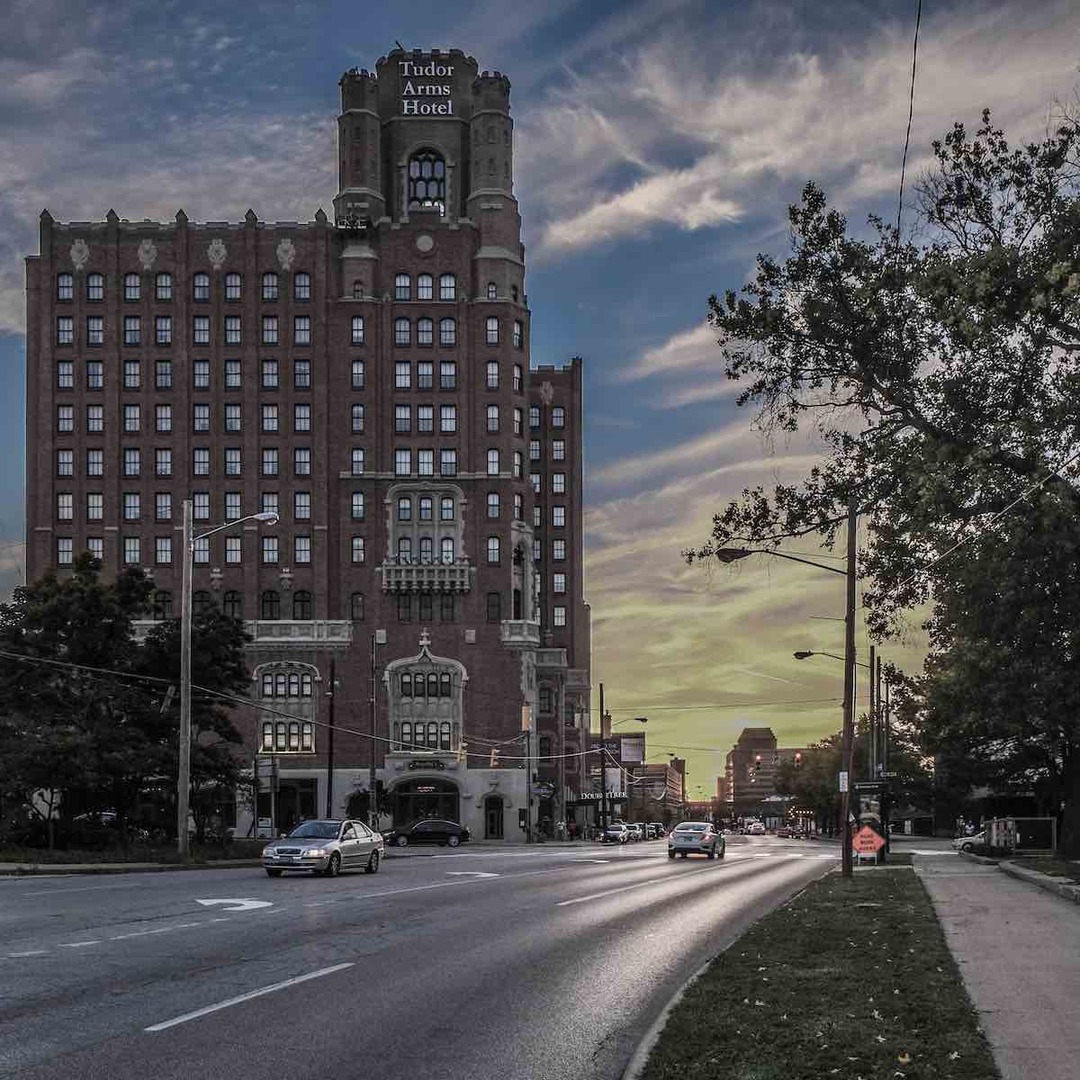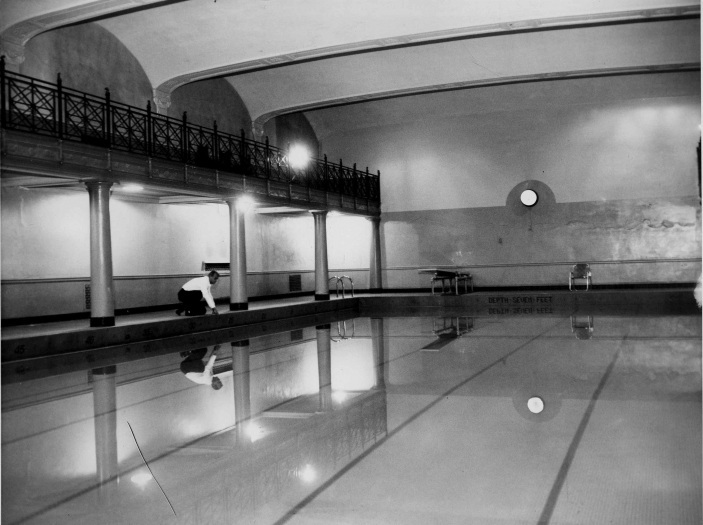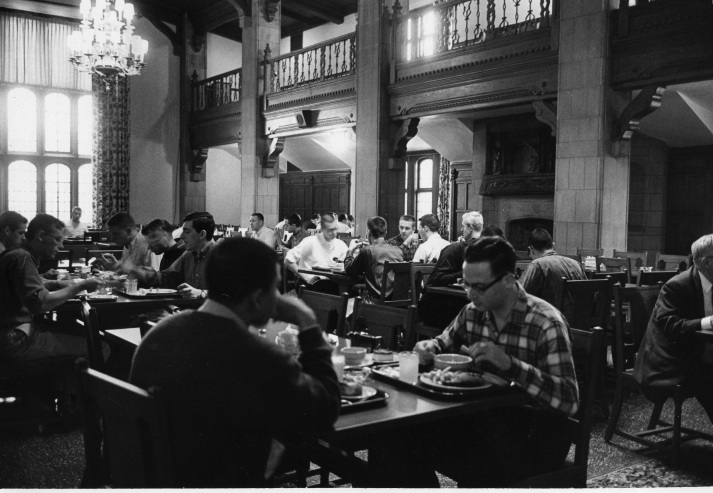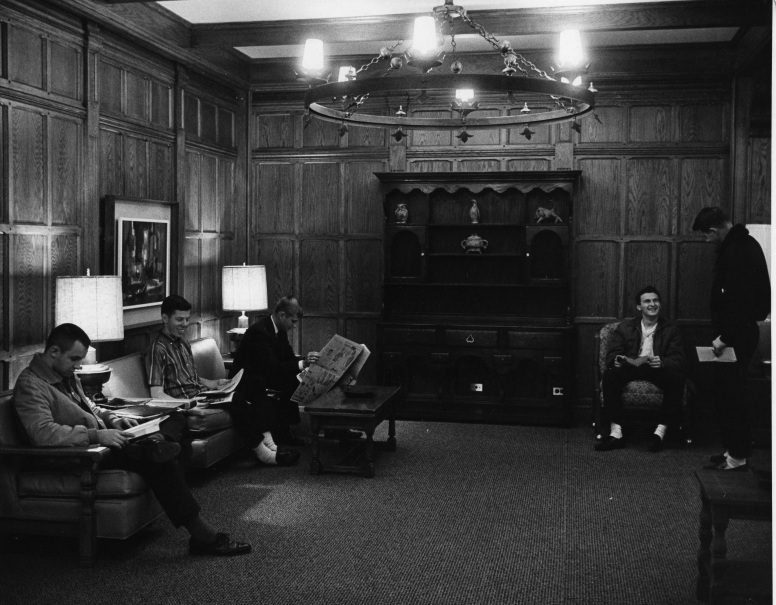Tudor Arms Hotel

At the corner of Carnegie Avenue and Stokes Boulevard stands a baronial fortress of a building that looks as though it would be perfectly at home on Manhattan's Upper West Side.
Constructed in 1926-30, the Gothic Revival building opened as the swanky, exclusive Cleveland Club. The enormous structure, designed by Frank Meade (who also designed countless extravagant homes in Cleveland Heights and Shaker Heights), was the tallest and grandest in the University Circle area. The twelve-story building boasted ballrooms, a swimming pool, a bowling alley, tall ceilings, huge leaded windows, intricate and expensive detailing (including gargoyles and even a statue of Moses Cleaveland), and beautiful views of downtown Cleveland. Over the years, the club rented out its ballrooms and also hosted lavish parties and events. But the Cleveland Club could not sustain the building for very long. After weathering the depths of the Great Depression, the rough economy finally forced the Cleveland Club to end its lease on the building in 1939.
On July 1, 1939, hotel operator Torrance C. Melrose assumed the lease, opening the Tudor Arms Hotel with rooms on the upper seven floors and sub-leasing existing club spaces to the Cleveland Club. The Tudor Arms soon became a noted entertainment venue. Jazz musicians kept its grand ballroom, the Empress Room, swinging well into the night. The ballroom functioned as a supper club and offered dinner along with the entertainment, which included jazz as well as many types of performances, from the conservative Lawrence Welk to the flamboyant Patrice Wymore. The Plain Dealer described one of Wymore's performances at the Tudor Arms in the following way: "Patrice Wymore, the singer and dancer [who] beats up no small storm of entertainment performed in the Empress Room. Her rhinestone studded hosiery, by the way, retails at $75 a pair, and on her they're worth it!" At the time, many frowned upon Wymore's provocative performance believed such acts at the hotel tarnished the neighborhood's respectability.
In 1960, as racial tensions began to sweep the city's east side, University Circle institutions regarded the flashy hotel nightclub as an undesirable tenant in the neighborhood. Accordingly, Western Reserve University and the Case Institute of Technology took over the property for use as a graduate student dormitory. They started the process by slowly changing some of the rooms into dormitories, while others continued to be rented nightly. The process was successful, and by 1963 the building had been fully converted for student use. During the conversion, the Tudor Arms got a $500,000 facelift, but it was not an extensive remodel. Eventually, the newly federated Case Western Reserve University leased the building to Cleveland Job Corps, which occupied the Tudor Arms until the building was sold in 2007.
After years of neglect, the Tudor Arms Hotel needed restoration. Minimal updates over the years had kept the building running, but it was a far cry from the glory days of the 1930s. In 2011, four years after Cleveland developers MRN Ltd purchased the property and undertook a $22 million restoration plan, the Tudor Arms reopened as a Doubletree hotel.
Audio
Images











